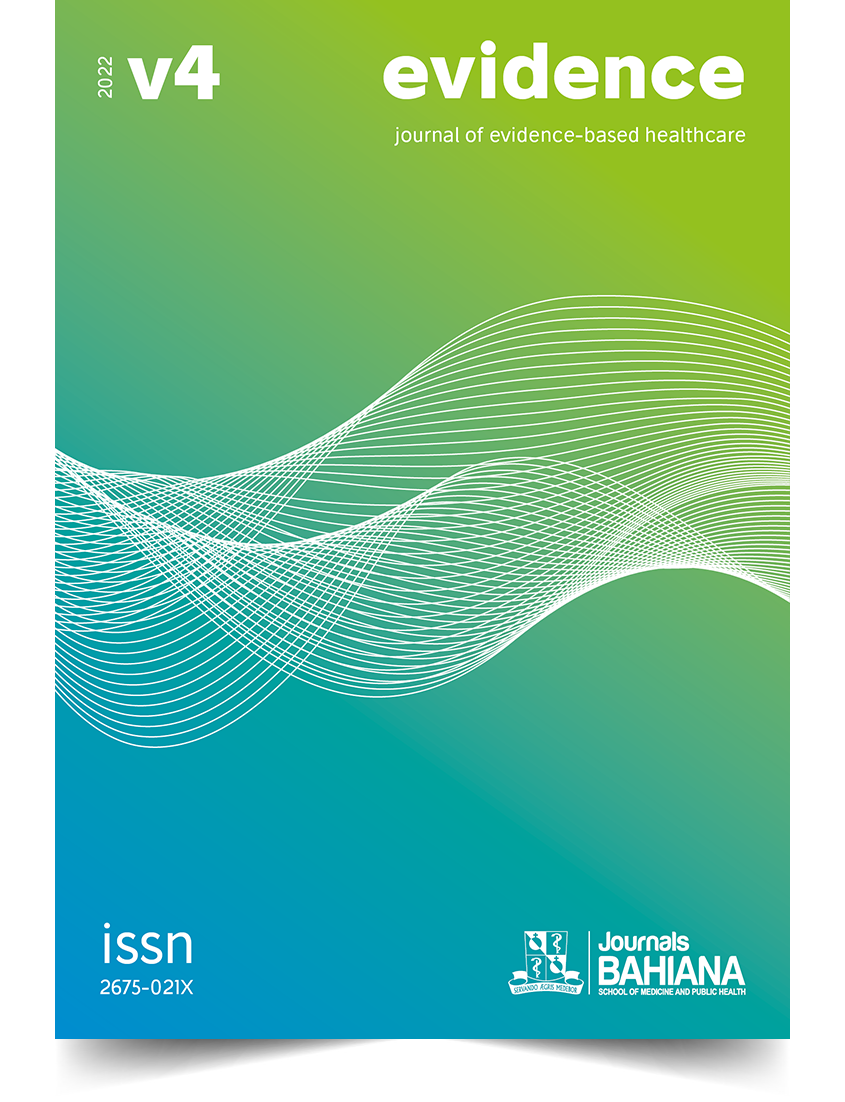Study protocol for thermographic analysis of the nasolabial fold region in women submitted to hyaluronic acid filling
DOI:
https://doi.org/10.17267/2675-021Xevidence.2022.e3754Keywords:
Infrared thermography, Hyaluronic acid fillerAbstract
INTRODUCTION: Due to the increasing number of cases with immediate and late complications caused by the action of facial fillers such as hyaluronic acid (HA), there is an urgent need to better evaluate the effect of these aesthetic and functional procedures. In this sense, it is relevant to use Infrared Thermography (IRT) as an auxiliary tool for the diagnosis of local dysfunctions. This diagnostic method allows the professional who applies the injections to be certain about the condition of the microcirculation of the anatomical site being treated, enabling the possibility of early intervention in case of adverse effects, such as the development of microbubbles, vascular compression, among other conditions. OBJECTIVE: The aim is to describe the thermal coefficient of the nasolabial sulcus (NLF) region of patients undergoing HA filling, using TRI. METHODS AND MATERIALS: This is a prospective study involving 25 female patients from a private clinic. Thermal imaging will be performed before, immediately after, 1 hour, 3 hours, and 1 month after filling the NLF region with AH. Study approved by CAAE: 34546620.7.0000.5544. RESULTS: The result of this study will allow preventive follow-up and early intervention in cases of vascular alterations related to facial fillings with AH.
Downloads
References
Sito G, Manzoni V, Sommariva R. Vascular complications after facial filler injection: a literature review and meta-analysis. J Clin Aesthet Dermatol. 2019;12(6):65–72. Cited: PMID: 31360292
Urdiales-Gálvez F, Delgado NE, Figueiredo V, Lajo-Plaza JV, Mira M, Moreno A, et al. Treatment of soft tissue filler complications: expert consensus recommendations. Aesthet Plast Surg. 2018;42:498–510. https://doi.org/10.1007/s00266-017-1063-0
Urdiales-Gálvez F, Delgado NE, Figueiredo V, Lajo-Plaza JV, Mira M, Ortíz-Martí F, et al. Preventing the complications associated with the use of dermal fillers in facial aesthetic procedures: an expert group consensus report. Aesthet Plast Surg. 2017;41(3):667–77. https://doi.org/10.1007/s00266-017-0798-y
Heydenrych I, Kapoor KM, Boulle K De, Goodman G, Swift A, Kumar N, et al. A 10-point plan for avoiding hyaluronic acid dermal filler-related complications during facial aesthetic procedures and algorithms for management. Clin Cosmet Investig Dermatol. 2018;11:603–11. https://doi.org/10.2147/CCID.S180904
Maio M, DeBoulle K, Braz A, Rohrich RJ. Facial assessment and injection guide for botulinum toxin and injectable hyaluronic acid fillers: focus on the midface. Plast Reconstr Surg. 2017;140(4): 540e-550e. https://doi.org/10.1097/PRS.0000000000003716
Yang HM, Lee JG, Hu KS, Gil YC, Choi YJ, Lee HK, et al. New anatomical insights on the course and branching patterns of the facial artery: Clinical implications of injectable treatments to the nasolabial fold and nasojugal groove. Plast Reconstr Surg. 2014;133(5):1077–82. https://doi.org/10.1097/PRS.0000000000000099
Judodihardjo H, Dykes P. Objective and subjective measurements of cutaneous inflammation after a novel hyaluronic acid injection. Dermatologic Surg. 2008;34(S1):110–4. https://doi.org/10.1111/j.1524-4725.2008.34252.x
Ibrahim O, Overman J, Arndt KA, Dover JS. Filler Nodules: Inflammatory or Infectious? A Review of Biofilms and Their Implications on Clinical Practice. Dermatol Surg. 2018;44(1):53–60. https://doi.org/10.1097/DSS.0000000000001202
Chiang YZ, Pierone G, Al-Naimi F. Dermal fillers: pathophysiology, prevention, and treatment of complications. J Eur Acad Dermatology Venereol. 2017;31(3):405–13. https://doi.org/10.1111/jdv.13977
Grablowitz D, Sulovsky M, Höller S, Ivezic-Schoenfeld Z, Chang-Rodriguez S, Prinz M. Safety and efficacy of princess® FILLER lidocaine in the correction of nasolabial folds. Clin Cosmet Investig Dermatol. 2019;12:857–64. https://doi.org/10.2147/CCID.S211544
Braz A, Sakuma T. Atlas of Global Anatomy and Filling of the Face. Rio de Janeiro: Guanabara Koogan LTDA; 2018.
DeLorenzi C. New high dose pulsed hyaluronidase protocol for hyaluronic acid filler vascular adverse events. Aesthet Surg J. 2017;37(7):814–25. https://doi.org/10.1093/asj/sjw251
Cruz-Segura A, Cruz-Domínguez MP, Jara LJ, Miliar-García Á, Hernández-Soler A, Grajeda-López P, et al. Early Detection of Vascular Obstruction in Microvascular Flaps Using a Thermographic Camera. J Reconstr Microsurg. 2019;35(7):541-8. https://doi.org/10.1055/s-0039-1688749
Lee HJ, Won SY, Jehoon O, Hu KS, Mun SY, Yang HM, et al. The facial artery: a comprehensive anatomical review. Clin Anat. 2018;31(1):99–108. https://doi.org/10.1002/ca.23007
Biagioni PA, Longmore RB, McGimpsey JG, Lamey P. Infrared thermography. Its role in dental research with particular reference to craniomandibular disorders. Dentomaxillofacial Radiol. 1996;25(3):119–24. https://doi.org/10.1259/dmfr.25.3.9084259
Lin PH, Saines M. Assessment of lower extremity ischemia using smartphone thermographic imaging. J Vasc Surg Cases Innov Tech. 2017;3(4):205–8. https://doi.org/10.1016/j.jvscit.2016.10.012
Fricova J, Janatova M, Anders M, Albrecht J, Rokyta R. Thermovision: a new diagnostic method for orofacial pain? J Pain Res. 2018;11:3195–203. https://doi.org/10.2147/JPR.S183096
Martiinez-Jimenez MA, Kolosovas-Machuca ES, Ramirez-Garcialuna AS, Loza-Gonzalez VM, Yanes-lane ME. Precisão do diagnóstico de imagens térmicas de infravermelho para detecção de infecção por COVID-19 em pacientes minimamente sintomáticos. Eur J Clin Invest. 2021;51(3):e13474. https://doi.org/10.1111/eci.13474
Haddad DS, Brioschi ML, Baladi MG, Arita ES. A new evaluation of heat distribution on the facial skin surface by infrared thermography. Dentomaxillofac Radiol. 2016;45(4):20150264. https://doi.org/10.1259/dmfr.20150264
Downloads
Published
Issue
Section
License
Copyright (c) 2022 Isabella Stagliorio Dumet Faria, Alena Peixoto Medrado, Fernanda Christina de Carvalho

This work is licensed under a Creative Commons Attribution 4.0 International License.
The authors retain copyrights, transferring to the Journal of Evidence-Based Healthcare only the right of first publication. This work is licensed under a Creative Commons Attribution 4.0 International License.



